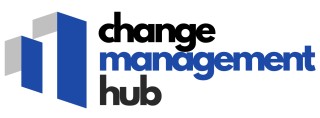
The Importance of Trust in Team Dynamics
Fostering a Foundation of Trust
Trust is the cornerstone of any cohesive team. Without trust, there can be no effective communication or collaboration, leading to dysfunctions such as lack of accountability and commitment among team members—a concept well-articulated by experts in team development and cohesive behaviors. Building trust within a team is not just a one-time endeavor but an ongoing process that requires intentional efforts from every member, particularly those in leadership roles. Establishing trust involves creating an environment where team members feel safe to express their opinions, ideas, and even disagreements. Without this sense of security, teams may shy away from constructive conflict, which is crucial for innovative problem-solving and collective goal achievement. Therefore, trust serves as a stabilizing force that enables teams to embrace conflict as a tool for growth. In the realm of change management, integrating trust-building activities can significantly enhance a team's cohesiveness. For example, using assessments like DISC and PXT Select can provide insights into individual and team behavioral styles, helping members understand each other's strengths and vulnerabilities. This understanding fosters empathy and reduces misinterpretations that can spur conflict. It's also worth considering a tailored team assessment or development program to support this journey. To maintain trust, it’s vital that team dynamics are nurtured through open communication, active listening, and consistent support. Leaders can play a pivotal role by modeling trust-centric behaviors and holding themselves accountable as much as their team members. Emphasizing transparency and celebrating collective achievements can reinforce trust and bolster commitment to shared objectives. For teams navigating change, understanding the importance of trust and implementing practices that prioritize cohesive work dynamics is essential. By doing so, they not only enhance their performance but also increase the chances of successful adaptation in change management initiatives. For more insights on integrating effective team strategies when new stakeholders join your initiative, you can explore a range of key steps.Embracing Constructive Conflict
Creating an Environment for Healthy Disagreements
In teams striving for cohesion, embracing constructive conflict is a vital component of healthy team dynamics. Many assume that conflict is purely negative, yet when managed correctly, it can propel a team's development forward. Understanding how to navigate disagreements effectively can highlight diverse perspectives and drive innovative solutions. Consider approaches rooted in popular team assessment models like DISC and tools like the Lencioni model. These frameworks encourage us to address conflict as an opportunity for growth, not as a dysfunction in teams.- Trust and Open Dialogue: Trust forms the foundation that supports honest dialogue about differing opinions. When team members trust each other, they're more likely to challenge ideas constructively, without fearing the aftermath of disagreement.
- Leadership Style: Effective leadership can set the tone for how conflict is perceived and managed. Leaders that model calm and open communication styles inspire team members to engage without hostility.
- Conflict Assessment: Encourage team members to engage in self-assessments to understand their natural tendencies in conflict situations. This awareness can foster personal development and improve team behaviors.
- Training and Coaching: Implementing coaching programs helps team members refocus their conflict management strategies. Tools like DISC certification benefit the team in understanding different behavioral styles, allowing a tailored approach to coaching and development.
Commitment to Shared Goals
Commitment to Unified Objectives
Making a cohesive team work effectively means aligning on shared goals and ensuring every team member is committed to reaching them together. Commitment, in this context, revolves around clarity and buy-in from every participant in the team. It prevents dysfunctions and creates a uniform direction for the team’s energy and resources.
In a setting where trust exists, teams can embrace conflict constructively without fear, enabling members to voice their thoughts freely. This transparency results in clearer goals and better decision-making processes, integral to team commitment. A versatile conflict management approach supports these dynamics, ensuring resolutions that everyone supports.
Effective team development techniques, like assessments and personal development programs, often include elements of commitment accountability. Coaching sessions and disc certifications empower leaders to harness these team behaviors to drive change successfully. In this cohesion-driven environment, members are more likely to support decisions, even if initial opinions differ, thus eliminating potential dysfunctions within the team.
Accountability Among Team Members
Fostering Responsibility Within Teams
In any cohesive team, accountability is a cornerstone behavior that ensures the group functions effectively. When team members hold each other accountable, it reinforces trust and commitment to shared goals. This behavior is crucial in preventing the dysfunctions team members might face, such as lack of commitment or avoidance of responsibility.
Accountability among team members is not just about pointing fingers when things go wrong. Instead, it involves a proactive approach to team development, where each member takes ownership of their actions and contributions. This can be facilitated through regular team assessments and open discussions about performance and expectations.
According to Patrick Lencioni, a well-known figure in team dynamics, accountability is one of the key behaviors that build a cohesive team. His work emphasizes the importance of creating an environment where team members feel comfortable holding each other accountable without fear of conflict. This is where trust and constructive conflict, as discussed earlier, play a vital role.
Leadership style and coaching can significantly impact how accountability is perceived and practiced within a team. Leaders who model accountability and encourage open communication set the tone for their teams. Programs like DISC certification and PXT Select can provide valuable insights into individual and team behaviors, helping leaders tailor their approach to foster a culture of accountability.
Incorporating accountability into team dynamics requires ongoing personal development and commitment from all members. By understanding each other's strengths and weaknesses through tools like team reports and assessments, teams can create a supportive environment that encourages growth and accountability.
Focusing on Collective Results
Driving Toward Collective Success
Building a cohesive team extends beyond personal development and understanding team dynamics. The integration of cohesive behaviors can turbocharge team members' efforts to focus collectively on achieving results. This focus is pivotal for maintaining a high-functioning team environment. A successful team, characterized by trust and constructive conflict, embraces commitment and accountability among its members. But true cohesion emerges when the team shifts their attention toward shared successes. This involves channeling individual and collective energies toward the accomplishment of team goals, rather than personal glory.- Synchronized Efforts: Teams should prioritize the synchronization of their tasks and responsibilities. A team assessment can aid in identifying areas for improvement and aligning efforts toward common objectives. Such alignment ensures that all members are on the same page, minimizing dysfunctions and promoting unity.
- Leadership Support: Effective leadership is crucial in guiding the team towards collective success. Leadership should foster an environment where team members feel empowered to contribute to the overall goals, blending various leadership styles to suit the team's dynamic.
- Celebrating Achievements: Recognizing and celebrating team achievements enhances motivation. It highlights the rewards of combining individual strengths to overcome challenges and secure team success. Such recognition fosters a culture of continual growth and development.
Integrating Cohesive Behaviors into Change Management Strategies
Embedding Key Team Behaviors in Change Management
When steering a change management strategy, ensuring your team is cohesive is essential. This relies on embedding key behaviors into your framework. By focusing on the dynamics that make teams operate effectively, leaders can navigate through change with greater agility.
To start with, trust forms the bedrock of a unified team. When team members trust each other, they are more likely to embrace the change journey. Building trust encourages open discussion, allowing team members to bring their best selves to the table.
Encouraging constructive conflict is another vital aspect. Teams should feel comfortable expressing differing opinions without fear of judgment. This kind of conflict, if managed well, can lead to innovative solutions and creative problem-solving through diverse viewpoints.
Commitment to shared goals is crucial. A team is more likely to achieve collective results when every member feels invested in the common objectives. This commitment fosters alignment and clarity, reducing any potential dysfunctions within the group.
Holding team members accountable is also imperative for change management. When accountability is integrated into team behaviors, it ensures that everyone pulls their weight, and any lapses are addressed constructively.
Focusing on the collective results rather than individual accomplishments helps maintain the team’s focus on the bigger picture. This aligns perfectly with the sustainable behaviors of a cohesive team, ensuring that efforts are directed toward common success.
Incorporating these behaviors into your change management program calls for strong leadership and a commitment to ongoing team development. Adopting a style that balances coaching and leadership can facilitate better outcomes. Investing in team assessments like the DISC or PXT Select can shed light on existing dynamics and guide personal development initiatives.
Using tools such as the team report can provide invaluable insights into potential dysfunctions and areas for improvement. Certifying your team's behaviors against recognized standards can further elevate your change initiatives.
By effectively integrating these strategies, change management becomes less of a daunting task but a continuous journey towards a more cohesive and resilient team.













